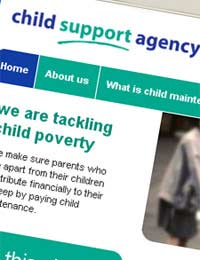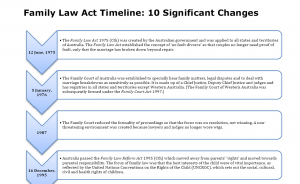Beatrice Zhang
Latest posts by Beatrice Zhang (see all)
 The vast majority of child abductions are not carried out by total strangers, but by the child’s own parent or close relative. This article will detail the resources available to a parent whose child has been abducted by someone both they and the child know.
The vast majority of child abductions are not carried out by total strangers, but by the child’s own parent or close relative. This article will detail the resources available to a parent whose child has been abducted by someone both they and the child know.
In the event your child has been abducted, the first step should always be trying to initiate communication with the abductor to see if you can reach an agreement about the return of the children. If this is not possible, for example if you do not know how to reach the abductor, or if the abductor refuses to communicate, the following resources are available to assist in the recovery of the child.
Locating the Child and Abductor
If you are unable to locate your child, the first resource available to you is the Police. However, you will more likely than not need to assist the police in finding further information that could help locate your child, by filing an application for a Commonwealth Information Order or applying for location orders.
A Commonwealth Information Order requires any government departments with information on where the abducted child is to disclose said information to the police (or other relevant bodies) in order for them recover the child. This Order can be sought through an application to the Court, which will then review the application and approve if it they are satisfied with what has been submitted. It is worth noting that the information from the respective government parties cannot be disclosed to the applicant, and cannot be used to locate people escaping family violence.
If the Commonwealth Information Order fails to yield enough information to find the child, you can also apply for location orders from the Court, which will require any person who may have information on the child’s whereabouts to provide the Registrar of the Court with said information. This information can be used by the police in conjunction with the information yielded by the Commonwealth Information Order to assist in the location of the child.
These three resources are the most effective in locating an abducted child. If/When the child and abductor are found, you should attempt to initiate communication to negotiate the return of the child. However, this is not always possible.
Recovering Child If Communication Is Unfeasible
If the abductor refuses to participate in discussions, or discussions irreparably break down before a solution is found, you can apply for a Recovery Order, which would force the abductor to return the child to you by order of the Court. This Order is generally served by police, and authorises them to use necessary force to find and retrieve your child.
For a Recovery Order to be granted, you need Court orders (parenting orders or registered parenting plans) that state that the children live with you. However, if you do not have these court orders, or if your current parenting plan states that the children do not live with you, but you are extremely concerned for the care, welfare, or development of your child, you can still apply for the Recovery Order by simultaneously applying for parenting orders/a change to the current orders.
If you fear the child will be taken overseas
 If you believe that the abductor will take your child overseas without your permission, you can apply for a court order prohibiting the removal of the child from Australia, on the basis that the child is involved in Family Law proceedings and may not be removed from Australia without the consent of the Court. This Court order must specifically direct the Australian Federal Police (AFP) to place the name of the child on the Family Law Watch List, which is in effect at all international sea ports and airports, and allows the AFP to stop the child from being taken overseas. The Federal Police can be contacted at all the capital cities in all the states. If it is an emergency, and the Court order cannot be approved in time, just the application for this order will enable the Police to block attempts to take the child overseas.
If you believe that the abductor will take your child overseas without your permission, you can apply for a court order prohibiting the removal of the child from Australia, on the basis that the child is involved in Family Law proceedings and may not be removed from Australia without the consent of the Court. This Court order must specifically direct the Australian Federal Police (AFP) to place the name of the child on the Family Law Watch List, which is in effect at all international sea ports and airports, and allows the AFP to stop the child from being taken overseas. The Federal Police can be contacted at all the capital cities in all the states. If it is an emergency, and the Court order cannot be approved in time, just the application for this order will enable the Police to block attempts to take the child overseas.
If your child currently does not have a passport, and you fear that the abductor will apply for one without your consent, you may raise a Child Alert, which warns the DFAT (Department of Foreign Affairs and Trade) that there are circumstances which mean the child’s passport should not be issued. Child Alerts are requested with a Child Alert Request Form which is available at Australian passport offices, at www.passports.gov.au, or by contacting the Passports Office on 13 12 32. If you are not in Australia, you can apply for a Child Alert by visiting the local Australian consulate or diplomatic mission. However, issuing a Child Alert will not prevent the issuing of any foreign passports your child is eligible for, nor will it prevent the child from travelling if he or she already has a valid passport.
If Your Child Has Been Taken Overseas
If your child has been taken overseas, the main resource available to you is the Hague Convention on Civil Aspects of International Child Abduction, which has processes in place which enables parents to seek to have their child returned their home country, or to have access to their child in the new country. Thus, it is important to find out whether the country your child has been taken to is a part of the Hague Convention, unless they have been taken to Egypt or Lebanon, both of which have bilateral agreements with Australia regarding international parental child abduction. If you do not know where your child has been taken, it is prudent to urgently seek legal advice on other avenues to pursue in order to find them. If you know where the child is residing, but that country is not a member of Hague Convention, Egypt, or Lebanon, it is advisable to seek private legal advice in that country.
If the other country is part of the Hague Convention, International Social Services (ISS) Australia is a free service that assists applicants wishing to make an application for return of or access to their child under the Hague Convention. The ISS also offers mediation and counselling services, among others. ISS can be contacted by phoning 1300 657 843 or online at www.iss.org.au
Another resource available that offers financial assistance (to those eligible) is the Overseas Child Abduction Scheme. This scheme will help with the cost of travel and/or overseas legal proceedings necessary to collect and return the child. Eligibility is decided on a means and merits-based test.
The DFAT can also provide some assistance to parents whose children have been abducted internationally, provided the parent knows where the child is located. This help includes information on legal services in the foreign country, and facilitating meetings with local child welfare agencies and relevant government authorities to ensure the welfare of the child is considered first and foremost.
 Managing your child’s daily schedule can be hard. It can be even harder after a separation or divorce, especially when you have a shared parenting arrangement.
Managing your child’s daily schedule can be hard. It can be even harder after a separation or divorce, especially when you have a shared parenting arrangement. The best thing about 2houses is the calendar. Having a visual tool can really help with planning. For example, if your child stays with you every second weekend, you could look ahead on the calendar to see if you have custody for that long weekend.
The best thing about 2houses is the calendar. Having a visual tool can really help with planning. For example, if your child stays with you every second weekend, you could look ahead on the calendar to see if you have custody for that long weekend. In the first part of this article series entitled “
In the first part of this article series entitled “
 Child Maintenance Trusts are established for the benefit of children after the breakdown of a family. There can be several advantages and disadvantages of child maintenance trusts depending on each individual circumstance.
Child Maintenance Trusts are established for the benefit of children after the breakdown of a family. There can be several advantages and disadvantages of child maintenance trusts depending on each individual circumstance. Legislation such as the Family Law Act (1975) and the Child Support (Assessment) Act (1989) outline the basic principle that children of divorced parents are entitled to “maintenance” particularly through child support.
Legislation such as the Family Law Act (1975) and the Child Support (Assessment) Act (1989) outline the basic principle that children of divorced parents are entitled to “maintenance” particularly through child support.
 Since 2009, separating couples have been able to file applications for divorce electronically (eFiling) via the Commonwealth Courts Portal at
Since 2009, separating couples have been able to file applications for divorce electronically (eFiling) via the Commonwealth Courts Portal at